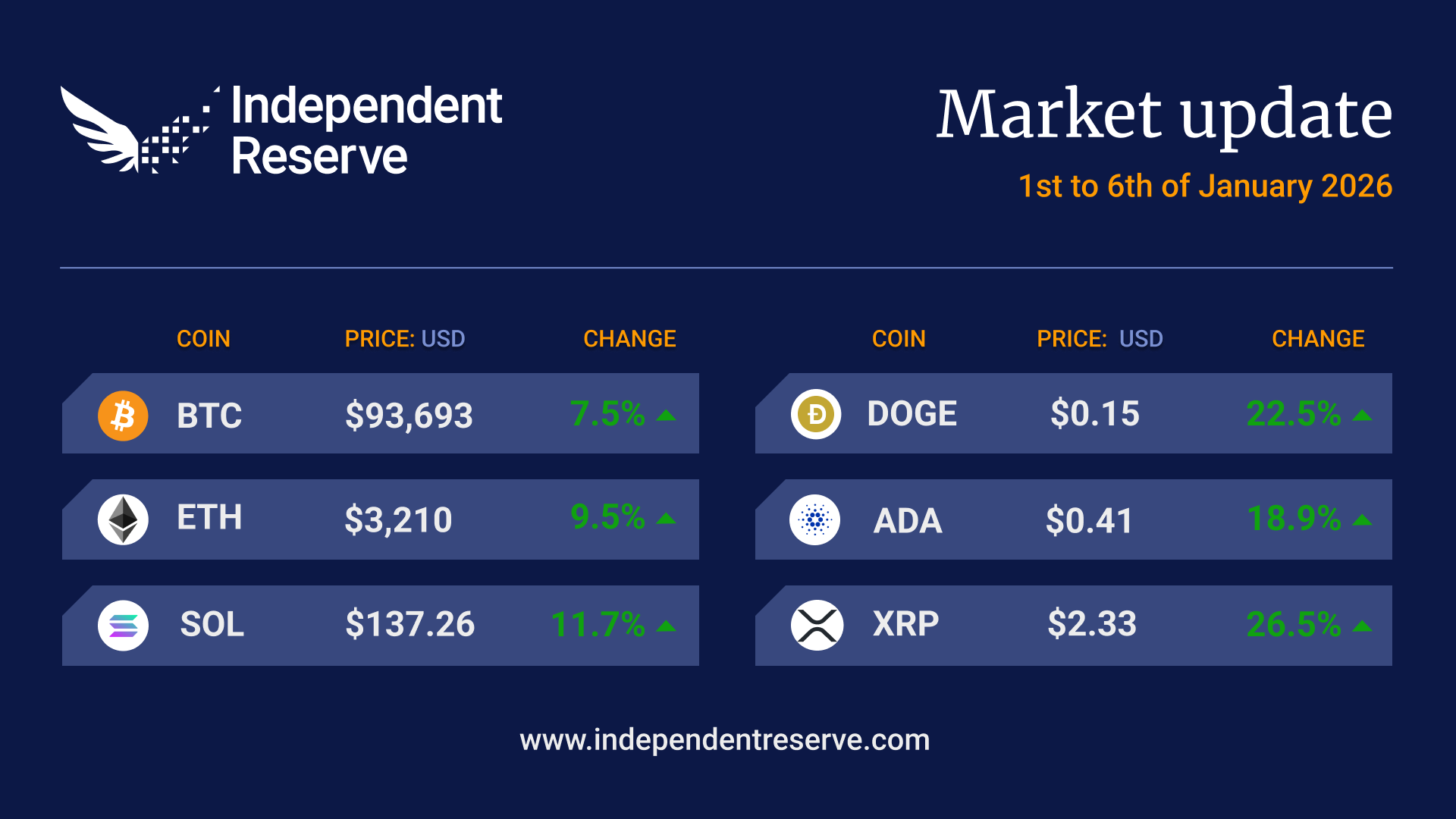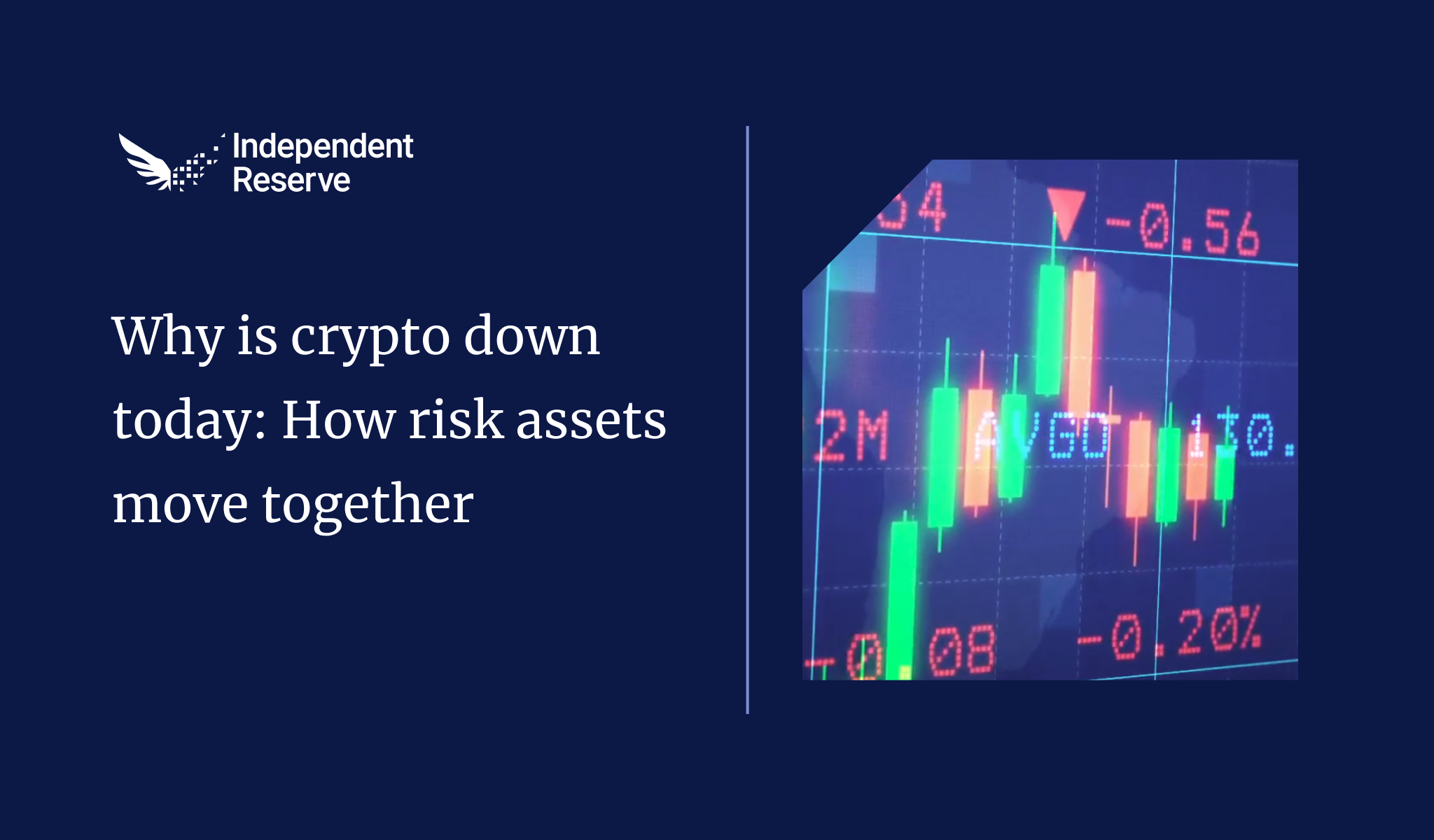In Markets
Bitcoin has stabilised by 4% in the past 24 hours, and finishes the week down 31% at US$22,150, or AU$32,060, which is roughly the lowest pricing since December 2020. ETH is down 35% this week and is trading around US$1,220 (AU$1,765). The macro picture looks bleak: May’s inflation rate in the US topped 8.6% and there’s speculation the Fed may hike interest rates by a whopping 0.75%. The S&P 500 is in a bear market, having lost more than 20% this year, and as a riskier asset class crypto has been hit even harder. The effects have been multiplied by the potential for lending platform Celsius to collapse and the possibility the ETH Merge may be delayed again. Everything has lost double digits: Cardano (-27%), XRP (-23%) and Polkadot (-20%). The Crypto Fear and Greed Index is at 7 or Extreme Fear. The overall market cap is at US$932 billion (AU$1.353T). With two weeks to go, this is shaping up as either the worst, or second worst quarter in Bitcoin’s history.

From the IR OTC Desk
Right here and now, it would appear the collective market is focusing (almost solely) on the upcoming US Federal Open Market Committee (FOMC) meeting – scheduled for Thursday the 16th of June at 4:00am AEST, with the press conference from Chair Powell to follow at 4:30am AEST. Last Friday, the US Inflation Rate YoY (May) printed at 8.6% relative to 8.3% previous. This is the fastest pace of price increases since December 1981 and brought the unfortunate news that inflation in the US had not yet peaked. Market price action has seen the December expiry fed fund futures move from a circa 2.80% cash rate being priced, to circa 3.60%. US two years notes last traded at 3.43% (having risen 3.28% in the last twelve months). These two things will likely result in higher interest rates (both borrowing and lending) being passed on to the consumer. The market is now challenging Chair Powell’s previous articulation, that 75bp or 100bp hikes are not currently in consideration for the Fed – pricing for this week’s meeting is near a 75bp hike at the time of writing. Watch this space carefully.
Risk assets have not been immune to the bond market repricing. With the high correlation between US tech stocks and cryptocurrencies remaining firmly in place, the cryptocurrency complex has remained under extreme sell side pressure – both from macroeconomic repricing and broader contagion fears caused by the announcement that lending platform Celsius, has blocked customer withdrawals. Yield earning platforms still appear to be working through the fallout from the UST (Terra) collapse… expect more to develop on this situation in time.
In Australia, Reserve Bank of Australia Governor Philip Lowe spoke to the ABC on the expected path for monetary policy. Warning that “expected inflation could hit 7 per cent by Christmas” and predicted that inflation wouldn’t begin to fall until the first quarter of next year. Governor Lowe’s message (to mainstream media!) was that Australians need to prepare for ‘substantial’ rate rises over the rest of the year – although no specific guidance was given as to exactly how high rates may move. The domestic economic calendar this week delivers the employment data for May (Thursday 11:30am AEST) and a speech by Governor Lowe on the ‘Economic Outlook and Monetary Policy’ (Tuesday the 21st of June at 10:00am AEST).
On the OTC desk – ETH/BTC has continued to move lower over the last week, as the market reprices the velocity of turnover in DeFi and in turn the requirement to hold ETH for gas fees. Despite constant sell side pressure in BTC (as exhibited through market price action), as an OTC desk we have only seen interest in buying dips, with long term investors happy to acquire into the volatility. Historically, the desk has always seen high volumes of both USDT and USDC stable coin flow, and this hasn’t changed, with a noticeable pickup over the last few weeks. What has changed however is the lack of current appetite for layer 1’s – especially those associated with an algorithmic stable coin project (think NEAR, Tron). It is expected that ETH/BTC will have to base before this layer 1 interest materially returns.
For any trading needs, please don’t hesitate to get in touch.
In Headlines
The good news
Bear markets are when the serious money gets made. Bitcoin has fallen below its realised price which is the average price that every coin in the supply was last spent on chain, and Bitcoin is now more oversold on the weekly RSI than at the bottom of the 2018 bear market. Shrimp wallets holding less than 1 BTC have been in accumulation mode since the LUNA crash, adding more than 20,863 BTC. Nobody really knows what happens from here which is why braver hodlers use a dollar cost averaging method to gently ease into positions around market bottoms. It’s worth remembering that every single person who bought Bitcoin and waited four years has seen their investments grow so far.

Bitcoin realised price vs actual price | Source: Glassnode
The bad news
Previous drawdowns in 2013-2015 and 2017-2018 saw Bitcoin and Ether down 80%-90% from ATHs and we are only 68% down so far. Veteran trader Peter Brandt last week correctly called ETH’s plunge to US$1,200 (AU$1,730) and he’s now suggesting Bitcoin’s price action “could become a textbook example of the famed Drano chart pattern'” and fall as low as US$12,700 (AU$18,300). BitMEX Research helpfully pointed out that ETH went below US$90 (AU$130) during the March 2020 crash so get your buy orders in now.
Merge delay?
Ethereum’s Ropsten testnet Merge went off successfully last week. It was the largest scale trial of the merge between Ethereum and the Beacon Chain so far and Ropsten is the oldest testnet, from 2016. However the core devs decided in the aftermath to delay the difficulty bomb by two months. Dev Tim Beiko said it was out of an abundance of caution to “be sure that we sanity check all the numbers before selecting an exact delay and deployment time,” but many took it as a sign the Merge isn’t going to happen as scheduled in August.

Celsius suspends services
The week’s big story is that lending and borrowing platform Celsius has suspended withdrawals to prevent its bank run getting any worse. The platform has been the subject of rumours since the collapse of UST/Terra, especially over its ability to repay user’s ETH that it has staked in the Eth2 deposit contract. The glass half full analysis is that Celsius is having liquidity problems, and can either find the funds (it’s been selling assets), or borrow them, or do a deal with another platform like rival Nexo (which has already offered). The glass half empty analysis is that Celsius has lost so much money in various hacks and collapses or it has invested too much in mining operations, that it is now insolvent. Another rival BlockFi took the opportunity to fire 20% of its employees.
Web3 is dead, long live Web5
Jack Dorsey has declared Web3 is dead and his Bitcoin-based DeFi project TBD is skipping Web4 and going straight to Web5. Web5 is essentially Web3 done right according to TBD (i.e. without Ethereum and other cryptocurrencies): a decentralised internet with decentralised web apps that return ownership and control over identity and data to individuals using the Bitcoin network as its heart.

Image source: Namcios [Twitter]
Bitcoin adoption to hit 10% by 2030
Blockware Intelligence is super bullish on the future of the space and predicts that 10% of the entire population of the world will be using Bitcoin by 2030 (at the moment it’s about 0.36%.) Blockware studied the adoption of the internet, smartphones and social media to argue that network-based technologies like BTC are adopted much faster than other disruptive innovations. Investors and analysts that reviewed the report include executives from Ark Invest, Arcane Assets, AMDAX Asset Management and M31 Capital.
Institutional Consensus
Jan Van Eck, the CEO of a global investment manager, VanEck told Forbes during an interview at Consensus that Bitcoin would hit US$250K (AU$360K) at some point. “Buyers see it (Bitcoin) as a complement to gold… Bitcoin will go to half the market cap of gold, or $250,000 a Bitcoin.” Tyrone Lobban, head of Onyx Digital Assets at JPMorgan, also said at Consensus the investment bank hopes to tokenise US treasuries or money market fund shares for use as collateral in DeFi pools. “The overall goal is to bring these trillions of dollars of assets into DeFi, so that we can use these new mechanisms for trading, borrowing [and] lending, but with the scale of institutional assets.”
Until next week, happy trading!


